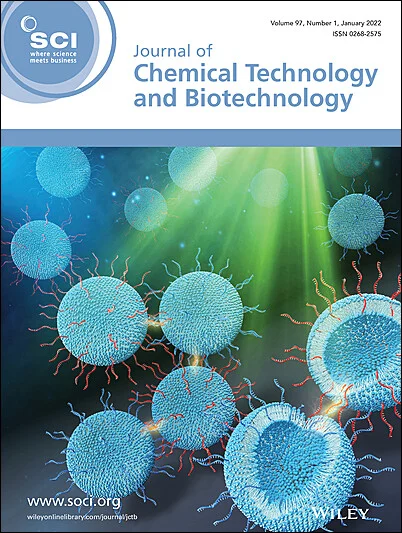Intensifying hydrogenotrophic methanogenesis in electrode-assisted UASB reactor under room-temperature conditions
Abstract
BACKGROUND
Anaerobic digestion is a widely used and cost-effective technology for wastewater treatment and renewable energy recovery through biogas production. However, its efficiency significantly decreases under sub-mesophilic or room-temperature conditions due to the low metabolic activity. Recent approaches have explored electrical stimulation to enhance microbial performance. This study investigates the effect of electrical stimulation via current density (ESCD) on the performance of an upflow anaerobic sludge blanket (UASB) reactor operating at room temperature.
RESULTS
Two 2 L UASB reactors were operated at a 12 h hydraulic retention time using domestic wastewater (chemical oxygen demand: 2 ± 0.1 g L−1). The control reactor (RC) had no electrodes, whereas the experimental reactor (RE) was equipped with RuO₂/Ti mesh electrodes, to which a current density of 0.54 mA cm−2 was applied. RE showed an 86% increase in biogas production with 68% CH4, 21% CO2 and 11% H2, resembling Hythane. Methane generation shifted toward hydrogenotrophic pathways (65%) over acetoclastic (35%). Compared to the biogas produced by RC, that from RE had a 23% higher calorific value and nearly twice the methane yield. Sludge from RE exhibited a 17% lower sedimentation rate, 44% higher sludge volumetric index, and more compact granules enriched with filamentous microbes (confirmed via scanning electron microscopy). Content of extracellular polymeric substances increased by 52% and was particularly rich in proteins.
CONCLUSION
This study demonstrates, for the first time, that electrical stimulation via current density (0.54 mA cm−2) using RuO₂/Ti mesh electrodes in a UASB reactor operating at room temperature can significantly enhance hydrogenotrophic methanogenesis. The electrode-assisted UASB reactor maintained continuous and elevated methane production, presenting a promising single-reactor strategy capable of high performance under room-temperature conditions without the need for external temperature control. © 2025 Society of Chemical Industry (SCI).



 求助内容:
求助内容: 应助结果提醒方式:
应助结果提醒方式:


